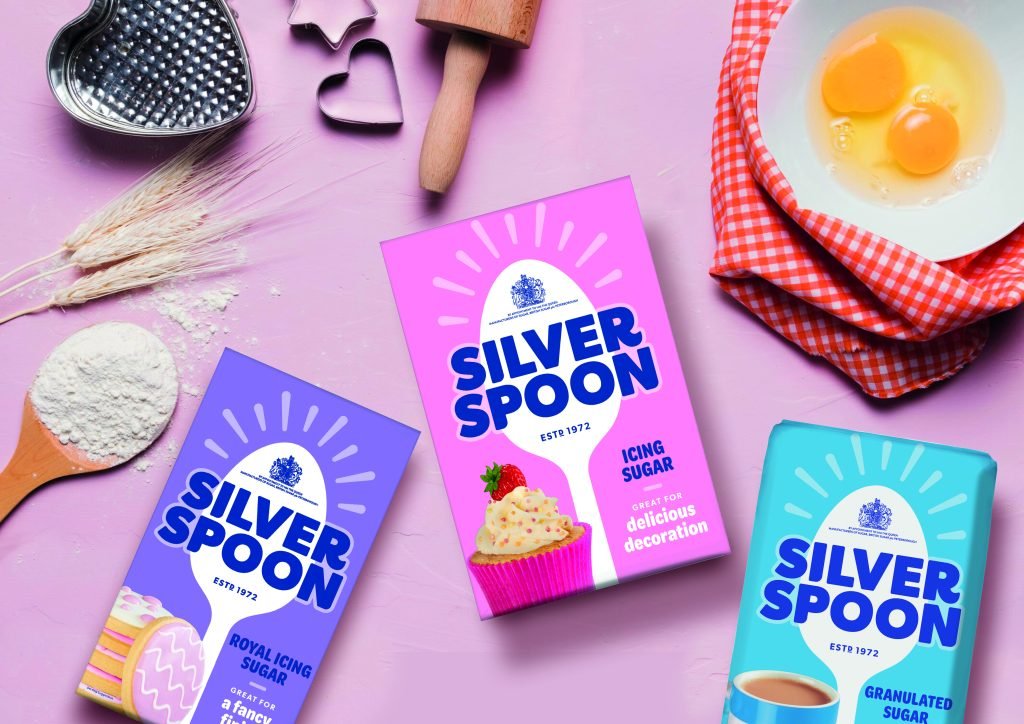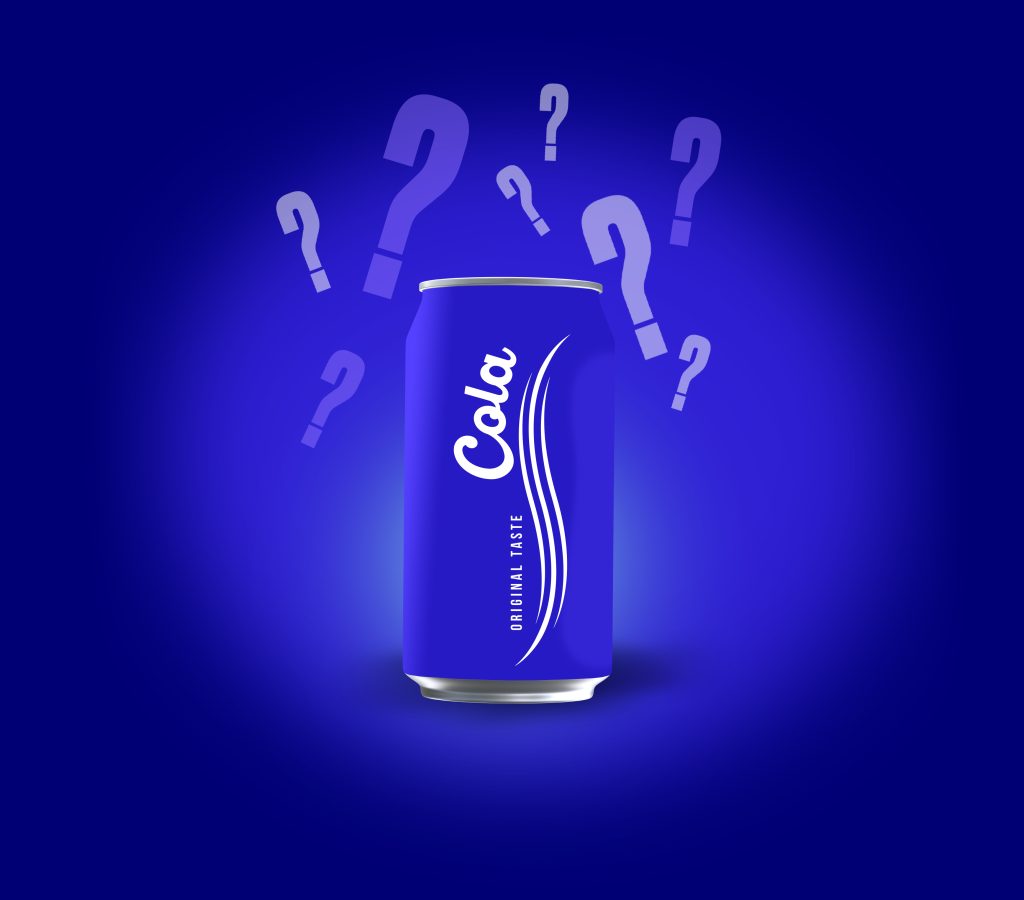THE IMPACT OF BRAND GUIDELINES ON YOUR PACKAGING

Consistency, consistency, consistency. If you hear us talk about something consistently, well, that’ll be consistency.
It’s such a powerful element of your brand and marketing strategy.
In the real world, while it might sound simple, maintaining a consistent brand can actually be a significant challenge. With multiple customer touch points both on- and offline, plus various people impacting brand comms and decisions, from copy and messaging to visuals, getting everyone and everything that represents your brand singing from the same hymn sheet is no mean feat.
That’s why it’s really important that brands build solid brand guidelines, and (sounds obvious, but stick with us) follow them.
WHAT BRAND CONSISTENCY DOES FOR FMCG BRANDS
The more distinctive and recognisable your brand is, the easier and faster it is for consumers to spot it and decide to buy it. When we look at what behavioural science tells us, brands need to build and maintain distinctive memory structures that support all the fast, emotional and instinctive motivations of their consumers’ buying decisions.
If Coca-Cola suddenly presented you with a blue can, you’d probably start reaching for the recognised logo, spot the blue and then… pause. Your brain would have some work to do to figure out if this really IS the drink brand you’re familiar with – you’d be questioning everything from the contents of the can to the authenticity of the product. There’s a good chance that you’d change your mind and leave it sitting there.
That’s why your brand needs to look like your brand anywhere and everywhere, on every product and on every shelf – instantly.
“Consistency is just giving comfort and confidence to the consumer, and that’s what it’s all about.”
Darren Cocks – Senior Designer

WHAT SHOULD BE INCLUDED IN BRAND GUIDELINES?
We’ve had a lot of experience working with brand guidelines – we’ve also got heaps of experience in creating them.
Here’s what we’ve found are the essential elements to feature in your brand guidelines, that all the great brand guidelines we’ve created or seen have in common.
- Logo specifications
One thing we always stress is the importance of clear instructions on logo usage. You’ll need to define the sizes, colour variations, and appropriate backgrounds to prevent any dilution of your brand’s visual impact. Keeping the logo usage consistent is crucial for maintaining strong brand recognition.
- Colour palette
Precisely define your primary and secondary colour palettes. Make sure to include specific CMYK and RGB codes to ensure uniformity, whether your brand appears in print or on digital platforms. This helps in reducing discrepancies and maintaining the integrity of your brand’s appearance everywhere.
- Typography
Typography guidelines are essential to ensure that all textual elements are uniform. These guidelines should specify which fonts to use in various contexts, such as headings versus body text, and lay down rules for font sizes, line spacing, and alignment. We’ve found that simplicity and clarity in typography not only enhance aesthetic appeal, but also improve readability.
- Imagery and iconography
Aligning your imagery and iconography with the brand’s overall aesthetic and values is vital. Your guidelines should clearly state the style of the photos and illustrations used across all brand communications, ensuring everything stays coherent with your brand’s identity.
- Technical guidelines
It’s important for guidelines to note any differences in the way the visual brand works for both digital and physical assets. For product packaging, it’s critical to address what works for various printing techniques and material limitations. These guidelines should detail the technical aspects of design to prevent issues during the production phase, like sizing or colours that wouldn’t work for a particular print process.
6. Brand Voice and Messaging
Maintaining a consistent brand voice across all forms of communication is as crucial as visual consistency. The guidelines should include a detailed description and examples of the brand’s messaging and voice and how it should communicate across various platforms.
Updating your brand guidelines
Your brand guidelines should be dynamic. They should be regularly updated to accurately reflect how your visual brand works in the real world, even if you’re not changing the brand itself, building in any nuances as you uncover them. Just make sure it’s clear which version is the latest, and where people can find it.
WHAT GREAT BRAND GUIDELINES CAN DO FOR EFFICIENCY AND PRECISION IN YOUR DESIGNS

Brand guidelines streamline the creative process by establishing clear expectations for the marketing and design teams. This not only speeds up the development process but also minimises errors in the final outputs and cuts down on amendment loops.
“Good technical guidelines at the beginning cut down the risk of printing issues down the line.”
Sarah Knibb – Senior Account Manager
WHERE BRAND CONSISTENCY GOES AWRY
We’ve already talked about why brand consistency matters, and it’s just as critical for product packaging. Packaging is not just a container but a critical touchpoint for customer interaction. The application of brand guidelines to packaging ensures that every package reflects the brand’s core message and aesthetic, thus reinforcing brand identity at every point of sale.
Avoiding design pitfalls by adhering to the guidelines
Missteps in packaging design can lead to costly revisions, product recalls and packaging that fails to resonate with or even confuses the consumer.
“A huge issue in the packaging design process is ‘the drift’. That movement away from the brand guidelines that eventually results in something being created that just isn’t right for the brand. And that’s where the additional costs start to roll in – the deviation that then results in re-design.”
Sarah Knibb – Senior Account Manager
Here’s how you can make sure people are referring to, and using, the brand guidelines.

Appoint a brand guardian to stop ideas and designs going off-track as early in the process as possible
It’s really easy to get enthusiastic about new ideas and campaigns, and before you know it, you’re a million miles away from where you started and what’s aligned with the brand. A brand guardian can help you and your team to keep one eye on brand consistency and spot any deviations early in the process.
Help designers and marketers understand that the best innovation happens within boundaries
Brand guidelines don’t stifle creativity; they channel it. They provide a framework within which your marketers and designers can innovate while still aligning with the brand’s overall vision. This really matters when launching new products or sub-brands, ensuring that all packaging remains true to the parent brand while exploring new territories.
The key benefits for creating and implementing strong brand guidelines for your packaging design and print process
Consistency across all touchpoints
Get your brand and products recognised quickly to make your customers buying decisions easier
Reduced costs with increased efficiency
Prevent the risk of re-design when the process reaches final stages, and reduce the time required to finalise designs.
Stronger brand identity
Build a robust brand identity that creates consumer loyalty and trust.
Brand guidelines are not just administrative tools; they are strategic assets that protect and enhance the brand’s market position. The consistency your brand guidelines provides creates a competitive edge that’s both measurable and impactful.
“Once you’ve got solid brand guidelines, it cuts down costs because people don’t go off on a tangent. It’s essential really; if you’re gonna look professional, essential.”
Darren Cocks – Senior Designer
This strategic embrace of brand guidelines not only preserves the integrity of the brand but also empowers brand and marketing teams to innovate confidently, knowing that every creative decision supports the brand’s long-term vision and direction.
Want to find out more about how the Pulse team can help evolve your brand and create guidelines? You can contact us here.
